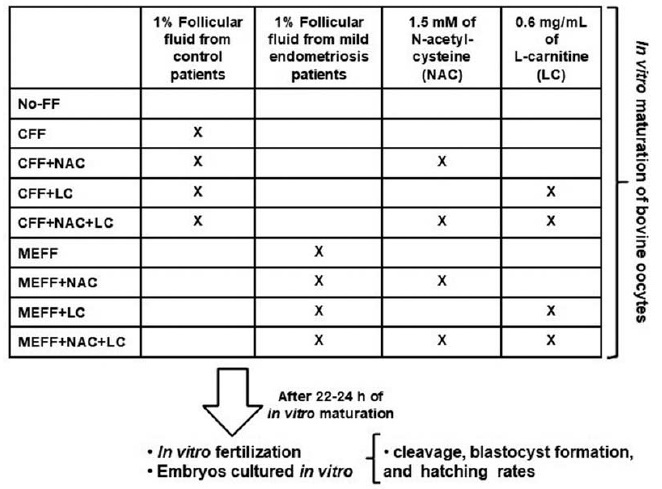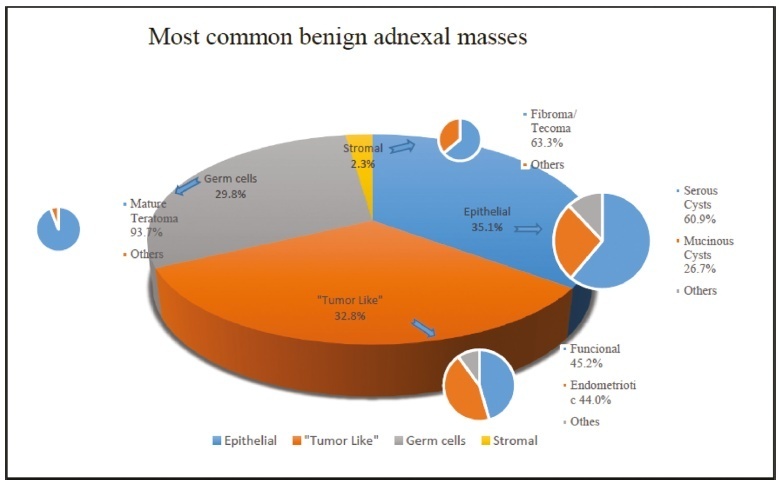Summary
Rev Bras Ginecol Obstet. 2023;45(11):683-688
It is well known that female infertility is multifactorial. Therefore, we aimed to compare the effects of thyroid dysfunction, vitamin deficiency, and microelement deficiency in fertile and infertile patients.
Between May 1st, 2017, and April 1st, 2019, we conducted a retrospective case-control study with of 380 infertile and 346 pregnant patients (who normally fertile and able to conceive spontaneously). The fertile patients were selected among those who got pregnant spontaneously without treatment, had a term birth, and did not have systemic or obstetric diseases. The levels of thyroid-stimulating hormone (TSH), triiodothyronine (T3), thyroxine (T4), anti-thyroid peroxidase (anti-TPO), vitamin D, vitamin B12, folic acid, ferritin, and zinc of both groups were compared.
There was no difference between patients in the infertile and pregnant groups in terms of low normal and high serum T3 and T4 levels (p = 0.938; p > 0.05) respectively, nor in terms of normal and high anti-TPO levels (p = 0.182; p > 0.05) respectively. There was no significant difference regarding patients with low, insufficient, and sufficient vitamin D levels in the infertile and pregnant groups (p = 0.160; p >0.05) respectively. The levels of folic acid, ferritin, and zinc of the infertile group were significantly lower than those of the pregnant group.
The serum levels of folic acid, ferritin, and zinc in infertile patients presenting to our outpatient clinic were lower than those o the fertile patients.
Summary
Rev Bras Ginecol Obstet. 2022;44(6):614-620
The impact of Chlamydia trachomatis (CT) infection on female’s fertility is not completely established yet, since the level of evidence associating these factors is still weak. Hence, the goal of the present review is to contribute to a better elucidation of this matter. The electronic database chosen was the Medline/PubMed, with the last survey on May 11, 2021. Publication date was used as a filter, with the previous 5 years having been selected. The following describers were used: chlamydia trachomatis AND infertility; chlamydia trachomatis AND tubal alteration AND infertility; chlamydia AND low pregnancy rates. From the 322 studies screened, 293 that failed to meet our eligibility criteria were excluded. Subsequently, we removed seven studies for not having the possible correlation between CT infections and female infertility as its main focus, and three for being about sexually transmitted infections (STIs) in general. Moreover, two studies designed as reviews were also excluded. Ergo, we included 17 studies in our qualitative analysis. The authors conducted research individually and analyzed carefully the studies selected. As we retrieved the information needed for our study through reading the texts, no contact was made with the authors of the studies selected. This systematic review corroborates the hypothesis that CT infection potentiates female infertility, as 76.47% of the included studies found a positive correlation between them. We conclude that there is an important association between CT infection and female infertility. Ergo, making CT screening part of the infertility investigation routine is relevant and has a reasonable justification.

Summary
Rev Bras Ginecol Obstet. 2021;43(6):457-466
Abnormalities in the eutopic endometrium of women with endometriosis may be related to disease-associated infertility. Although previous RNA-sequencing analysis did not show differential expression in endometrial transcripts of endometriosis patients, other molecular alterations could impact protein synthesis and endometrial receptivity. Our aim was to screen for functional mutations in the transcripts of eutopic endometria of infertile women with endometriosis and controls during the implantation window.
Data from RNA-Sequencing of endometrial biopsies collected during the implantation window from 17 patients (6 infertile women with endometriosis, 6 infertile controls, 5 fertile controls) were analyzed for variant discovery and identification of functional mutations. A targeted study of the alterations found was performed to understand the data into disease’s context.
None of the variants identified was common to other samples within the same group, and no mutation was repeated among patients with endometriosis, infertile and fertile controls. In the endometriosis group, nine predicted deleterious mutations were identified, but only one was previously associated to a clinical condition with no endometrial impact. When crossing the mutated genes with the descriptors endometriosis and/or endometrium, the gene CMKLR1 was associated either with inflammatory response in endometriosis or with endometrial processes for pregnancy establishment.
Despite no pattern of mutation having been found, we ponder the small sample size and the analysis on RNA-sequencing data. Considering the purpose of the study of screening and the importance of the CMKLR1 gene on endometrial

Summary
Rev Bras Ginecol Obstet. 2021;43(2):119-125
To investigate whether follicular fluid (FF) from infertile women with mild endometriosis (ME) alters in vitro bovine embryo development, and whether the antioxidants N-acetyl-cysteine (NAC) and/or L-carnitine (LC) could prevent such damages.
Follicular fluid was obtained from infertile women (11 with ME and 11 control). Bovine oocytes were matured in vitro divided in: No-FF, with 1% of FF from control women (CFF) or ME women (MEFF); with 1.5mM NAC (CFF + NAC, MEFF + NAC), with 0.6mg/mL LC (CFF + LC, MEFF + LC), or both antioxidants (CFF + NAC + LC, MEFF + NAC + LC). After in vitro fertilization, in vitro embryo culture was performed for 9 days.
A total of 883 presumptive zygotes were cultured in vitro. No differences were observed in cleavage rate (p = 0.5376) and blastocyst formation rate (p = 0.4249). However, the MEFF group (12.5%) had lower hatching rate than the No-FF (42.1%, p = 0.029) and CFF (42.9%, p = 0.036) groups. Addition of antioxidants in the group with CFF did not alter hatching rate (p ≥ 0.56), and in groups with MEFF, just NAC increased the hatching rate [(MEFF: 12.5% versus MEFF + NAC: 44.4% (p = 0.02); vs MEFF + LC: 18.8% (p = 0.79); versus MEFF + NAC + LC: 30.8% (p = 0.22)].
Therefore, FF from infertile women with ME added to medium of in vitro maturation of bovine oocytes impairs hatching rate, and NAC prevented these damages, suggesting involvement of oxidative stress in worst of oocyte and embryo quality of women with ME.

Summary
Rev Bras Ginecol Obstet. 2021;43(1):28-34
To determine embryo quality (mean graduated embryo score [GES]) in infertile patients with endometriosis undergoing in vitro fertilization with embryo transfer (IVF-ET) compared with infertile patients without endometriosis.
A case-control study was performed comparing 706 embryos (162 patients) divided into 2 groups: 472 embryos derived from patients without endometriosis (n= 109, infertile patients with tubal infertility) and 234 embryos from patients in the study group (n= 53, infertile patients with peritoneal endometriosis). All patients were subjected to IVF using an oestradiol-antagonist-recombinant follicle-stimulating hormone (FSH) protocol for ovarian stimulation. Themean GESwas performed to evaluate all embryos at 3 points in time: 16 to 18 hours, 25 to 27 hours, and 64 to 67 hours. Embryo evaluation was performed according to the following parameters: fragmentation, nucleolar alignment, polar body apposition, blastomere number/morphology, and symmetry. The primary outcomemeasure was the mean GES score.We also compared fertilization, implantation, and pregnancy rates.
Although the number of embryos transferred was greater in patients with endometriosis than in the control group (2.38 ± 0.66 versus 2.15 ± 0.54; p= 0.001), the meanGESwas similar inbothgroups (71 ± 19.8 versus 71.9 ± 23.5; p= 0.881). Likewise, the fertilization ratewas similar in all groups, being 61% in patients with endometriosis and 59% in the control group (p= 0.511). No significant differences were observed in the implantation (21% versus 22%; [p= 0.989]) and pregnancy rates (26.4% versus 28.4%; p= 0.989).
Embryo quality measured by the mean GES was not influenced by peritoneal endometriosis. Likewise, the evaluated reproductive outcomes were similar between infertile patients with and without endometriosis.

Summary
Rev Bras Ginecol Obstet. 2020;42(9):569-576
To performa comprehensive review to provide practical recommendations regarding the diagnosis and treatment of benign adnexal masses, as well as information for appropriate consent, regarding possible loss of the ovarian reserve.
A comprehensive review of the literature was performed to identify the most relevant data about this subject.
In total, 48 studies addressed the necessary aspects of the review, and we described their epidemiology, diagnoses, treatment options with detailed techniques, and perspectives regarding future fertility.
Adnexal masses are extremely common. The application of diagnosis algorithms is mandatory to exclude malignancy. A great number of cases can bemanaged with surveillance. Surgery, when necessary, should be performed with adequate techniques. However, even in the hands of experienced surgeons, there is a significant decrease in ovarian reserves, especially in cases of endometriomas. There is an evident necessity of studies that focus on the long-term impact on fertility.

Summary
Rev Bras Ginecol Obstet. 2020;42(3):152-159
To analyze the interobserver and intraobserver reproducibility of the visualization and continuity of the juncional zone (JZ) by three-dimensional (3D) ultrasound in infertile women, and to evaluate the sociodemographic, hormonal, and structural factors that influence these assessments.
A prospective study conducted at the Assisted Reproductive Technology Unit of Hospital Senhora da Oliveira, in the city of Guimarães, Portugal. Transvaginal 3D ultrasonography was performed, and 2 volumes were generated per case. Two observers who were blinded to each other's work analyzed these volumes, choosing the best coronal section. Four months later, one of the observers performed the same methodology. The JZ visualization was classified as optimal, satisfactory, and unsatisfactory, and the JZ continuity, as continuous and discontinuous. The interobserver and intraobserver agreements were analyzed. The influence of hormonal, structural, and sociodemographic factors on the JZ was evaluated.
In total, 65 women were included in the present study. The interobserver reproducibility was substantial for JZ visualization and continuity (k = 0.635 and 0.753 respectively), and the intraobserver reproducibility was very good for JZ visualization and continuity (k = 0.884 and 0.816 respectively). Trilaminar endometrial pattern was associated with optimal JZ visualization (p = 0.012). The increase of 1 unit in the level of serum estradiol represents a 9.9% decrease in the odds of unsatisfactory visualization of the JZ (odds ratio [OR] = 0.9; 95% confidence interval [95%CI] = 0.814–0.996; p = 0.042). Endometriosis increases the odds of unsatisfactory visualization by 24 times (OR = 23.7; 95%CI = 1.262–437.057; p = 0.034). The prevalence of discontinuous JZs was of 60%. Myomas and endometriosis were associated with discontinuous JZs (p = 0.034 and 0.016 respectively).
The assessment of JZ visualization and continuity by 3D ultrasound is reproducible enough to be used in the clinical practice.

Search
Search in:
breast (42) breast cancer (42) breast neoplasms (95) Cesarean section (72) endometriosis (66) infertility (56) Maternal mortality (43) menopause (82) obesity (58) postpartum period (40) pregnancy (225) Pregnancy complications (99) Prenatal care (68) prenatal diagnosis (50) Prevalence (41) Quality of life (51) risk factors (94) ultrasonography (79) urinary incontinence (40) women's health (48)